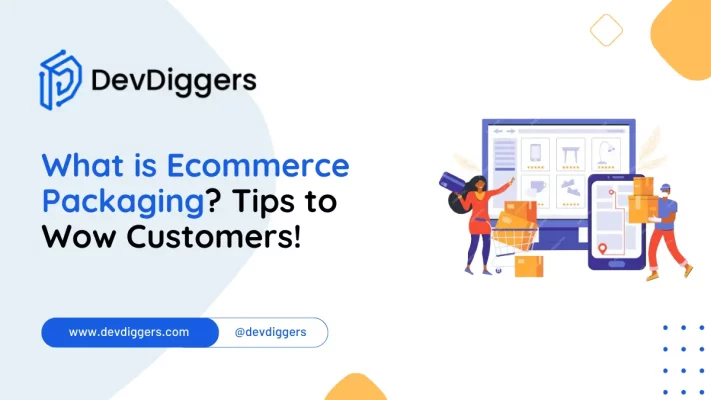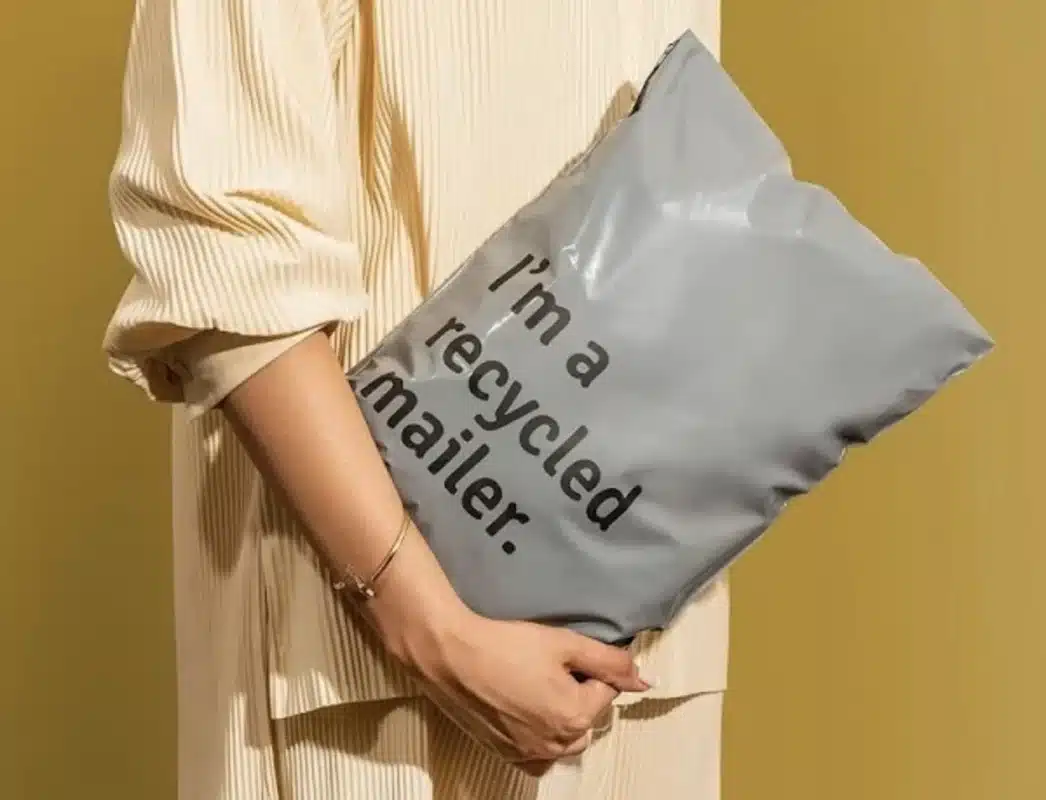What is Ecommerce Packaging? Tips to Wow Customers!

In the bustling world of online commerce, where transactions occur seamlessly across digital platforms, one essential yet often underestimated aspect is the pivotal role played by what is eCommerce packaging.
It extends beyond mere delivery logistics; it is a strategic instrument bridging the gap between virtual transactions and physical experiences.
From safeguarding products during transit to leaving a lasting impression on customers, the art of packaging in the eCommerce realm encompasses a multitude of considerations.
In this blog, we will learn what eCommerce packaging is, exploring its significance in the modern business landscape and how it contributes to practical functionality and brand awareness.
Join us on a journey through the details of packaging in eCommerce, where every box tells a story, and every unboxing is an experience in itself.
What is Ecommerce Packaging?

Ecommerce packaging refers to the materials and design used to package products purchased online for shipping to customers.
It includes the boxes, envelopes, padding materials (such as bubble wrap or packing peanuts), tape, labels, and other components needed to protect and present the items during transit.
Ecommerce coordinators ensure that products arrive safely at customers’ doorsteps while reflecting the brand’s image and values.
It often involves considerations such as sustainability, cost-effectiveness, and practicality for both shipping and handling.
Components of Ecommerce Packaging
In the context of what is eCommerce packaging, it is essential to understand the critical components of eCommerce packaging typically include:
- Boxes or Envelopes: These are the primary outer packaging for shipping products. They come in various sizes and materials, such as cardboard or corrugated cardboard.
- Padding Materials: Materials like bubble wrap, packing paper, air pillows, or foam inserts protect items from damage during transit by providing cushioning.
- Tape: Packaging tape is used to securely seal boxes or envelopes to prevent them from opening during shipping.
- Labels and Stickers: Shipping labels with addresses and tracking information are affixed to packages for identification and tracking. Stickers may also be used for branding or handling instructions.
- Filler Materials: These fill empty spaces in packages to prevent items from shifting during transit. Examples include packing peanuts or shredded paper.
- Inner Packaging: Some products may require additional inner packaging, such as plastic bags or shrink wrap, to protect them from moisture or other environmental factors.
- Documentation: This includes invoices, packing slips, or any other necessary paperwork that needs to be included with the shipment for customs or legal purposes.
- Branding Materials: Some companies may include promotional materials like flyers, discount codes, or branded stickers to enhance the unboxing experience and promote brand awareness.
These components work together to ensure that products are safely packaged and delivered to customers while reflecting the brand’s image and values.
Types of Ecommerce Packaging
These are just a few examples of the types of packaging available, each offering unique benefits depending on the nature of the product being shipped and the sustainability goals of the business.
1. Corrugated Cardboard Boxes

These are sturdy and versatile boxes made from corrugated cardboard, ideal for shipping a wide range of products. They come in many sizes and can be customized with branding.
2. Padded Envelopes

Padded envelopes are lined with bubble wrap or foam padding to cushion small, lightweight items during transit. They are lightweight and cost-effective for shipping items like jewelry or electronics accessories.
3. Poly Mailers

Poly mailers are lightweight, waterproof wrappers made of polyethylene plastic. They are commonly used for clothing, textiles, and soft goods, offering flexibility and durability in shipping.
4. Rigid Mailers

Rigid mailers are flat, sturdy envelopes made from materials like cardboard or chipboard. They protect documents, photographs, and other flat items that require rigidity during shipping.
5. Compostable Mailers

Compostable mailers are environmentally friendly alternatives to traditional plastic mailers. Made from materials like cornstarch or sugarcane, they break down naturally in composting facilities, reducing environmental impact.
6. Paper-based Packaging

Paper-based packaging includes paperboard boxes, kraft paper, and paper bags. These recyclable and biodegradable materials offer a sustainable choice for packaging various products.
7. Reusable Packaging

Reusable packaging solutions, such as tote bags or fabric pouches, provide a sustainable alternative to single-use packaging. They can be customized with branding and offer added value to customers who can reuse them.
8. Custom Packaging

Custom packaging allows businesses to create unique solutions for their brand and products. This can include branded boxes, tissue paper, stickers, or inserts designed to enhance the unboxing experience.
Importance of Ecommerce Packaging
The importance of eCommerce packaging lies in its crucial role in ensuring customer satisfaction, brand reputation, and sustainability. Here are several vital reasons why it is essential:
1. Product Protection

Ecommerce packaging serves as the frontline defense against damage during transit.
It shields products from physical harm and protects them from environmental factors such as moisture, dust, and temperature variations.
Properly designed packaging incorporates cushioning materials like bubble wrap, foam inserts, or air pillows to absorb shocks and vibrations during shipping.
Additionally, inner packaging, such as plastic bags or shrink wrap, may provide an extra layer of protection against moisture or contaminants.
By ensuring products arrive intact and in perfect condition, effective product protection enhances customer satisfaction and reduces the likelihood of returns or negative reviews.
2. Brand Image and Recognition

Ecommerce packaging isn’t just about protection; it’s a key player in shaping brand identity.
Well-designed packaging communicates the brand’s personality, values, and story, creating memorable unboxing experiences that build loyalty and encourage word-of-mouth recommendations.
Consistent branding across packaging builds recognition and distinguishes the brand from competitors, while innovative designs captivate customers’ attention and elevate the overall brand experience.
In short, it is a powerful tool for leaving a lasting impression and standing out in the digital marketplace.
3. Customer Experience

The packaging of eCommerce products goes beyond merely protecting items during transit; it plays a pivotal role in crafting a memorable and positive experience for customers.
When a package arrives on a customer’s doorstep, it becomes a solid representation of the brand they’ve chosen to engage with.
Thoughtfully designed packaging can spark excitement, anticipation, and a sense of delight as customers unwrap their purchases.
Elements such as personalized notes, branded tissue paper, or creative inserts add a customized touch, building a deeper connection between the customer and the brand.
Furthermore, easy-to-open packaging and intuitive unboxing experiences enhance convenience and satisfaction, leaving a lasting impression.
4. Differentiation and Competitive Advantage

Ecommerce packaging is a powerful tool for differentiation and gaining a competitive edge in the marketplace.
In a sea of online retailers offering similar products, distinctive packaging can capture attention and leave a lasting impression on customers.
Unique packaging designs, creative branding elements, and innovative unboxing experiences set a brand apart and contribute to brand recall and customer loyalty.
By investing in packaging that reflects the brand’s personality, values, and aesthetics, businesses can carve out a distinct identity in the minds of consumers.
Moreover, packaging that aligns with the target audience’s preferences and lifestyle can strengthen the emotional connection between customers and the brand.
5. Sustainability and Environmental Responsibility

Sustainability and environmental responsibility are pivotal aspects of eCommerce packaging.
Using recyclable materials, minimizing excess packaging, and optimizing package dimensions reduce environmental impact and enhance brand reputation and customer loyalty.
Embracing sustainable packaging practices offers a competitive edge in the eco-conscious marketplace while demonstrating a commitment to environmental care.
6. Cost Efficiency

Cost efficiency is a crucial aspect of eCommerce packaging, influencing the overall profitability of online businesses.
Companies can significantly save shipping costs by optimizing packaging design and material selection.
Lightweight and appropriately sized packaging reduces dimensional weight charges carriers impose, especially for bulky or oversized items.
Moreover, efficient packaging minimizes the need for excess filler materials, reducing material costs and shipping fees associated with heavier packages.
Overall, prioritizing cost-effective packaging solutions enables eCommerce businesses to maximize their bottom line while maintaining the integrity of their products during transit.
Final Thoughts
In summary, what is eCommerce packaging extends far beyond transporting goods it summarizes the essence of a brand’s identity and commitment to customer satisfaction.
Packaging represents a brand’s values and principles, from safeguarding products during transit to creating memorable unboxing experiences.
As eCommerce flourishes, embracing innovative and sustainable packaging solutions becomes increasingly vital.
By recognizing the pivotal role of eCommerce packaging and using it to enhance brand recognition, foster customer loyalty, and promote environmental responsibility, businesses can carve out a distinct competitive edge in the online marketplace.
Ultimately, it is not just about delivering products; it’s about providing exceptional experiences that resonate with customers and contribute to a brighter, more sustainable future.
FAQs
Q1. How can I choose the suitable eCommerce packaging for my products?
When selecting packaging for your eCommerce business, consider factors such as the size and weight of your products, their fragility, and your brand aesthetic. It’s also essential to choose packaging materials that are eco-friendly and cost-effective.
Q2. What are some eco-friendly eCommerce packaging options?
Eco-friendly packaging options include recyclable materials such as cardboard and paper, biodegradable packaging peanuts, compostable mailers made from plant-based materials, and reusable packaging solutions.
Q3. How can I ensure my eCommerce packaging is sustainable?
Opt for recyclable, biodegradable, or compostable materials to ensure your eCommerce packaging is sustainable. You can also minimize packaging waste by using the right-sized boxes and reducing excess packaging materials.
Q4. What role does branding play in eCommerce packaging?
Ecommerce branding plays a significant role in eCommerce packaging as it helps differentiate your products from competitors and reinforces your brand identity. Custom packaging with your logo, colors, and messaging can leave a lasting impression on customers.
Q5. Where can I find eCommerce packaging suppliers?
You can find suppliers online via Alibaba, Uline, or PackagingSupplies.com. Many local packaging companies also offer customized solutions adapted to your needs.

Kartika Musle
A Tech enthusiast and skilled wordsmith. Explore the digital world with insightful content and unlock the latest in tech through my vision.

Leave a Reply